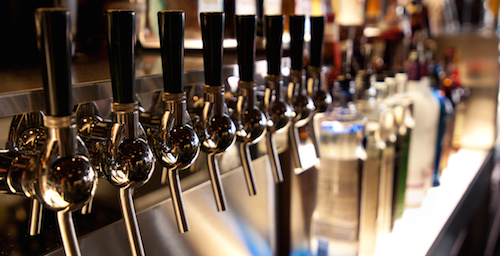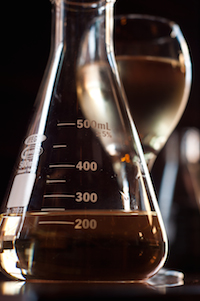
Wine on tap is still relatively new in the restaurant industry, and at times, is given some sideways looks. There are a few misconceptions and myths about wine on tap, often stemming from a previous prejudice against its more recognizable counterpart, boxed wine. Here, we aim to share some of the benefits of wine on tap, and explain why it’s more fresh, more environmentally friendly and more cost-effective than wine in bottles.
What is Wine on Tap?
Wine on tap is popping up in restaurants across the US. Instead of receiving dozens of bottles, restaurants such as Old Town Pour House and City Works choose to receive kegs of wine instead. Wineries fill a keg, approximately 26.6 bottles of wine, or 120 glasses, with the same quality wine they use for their bottled wine, and then transport it to the restaurant. Upon receiving the keg, the restaurant will store it in a cool environment, similar to how they store bottled wine. The keg is then ‘tapped’ in almost the same way a keg of beer is tapped.
The Benefits of Wine on Tap
Why choose wine on tap instead of bottles? Let’s break it down into three key benefits:
Taste
 Wine that tastes good comes down to two things–good quality wine and keeping the wine fresh. Some people assume that wine on tap means a lesser-quality or lower-cost wine (Franzia anyone?!). This is not the case at all, with wineries making more of their premium wine available on tap. For wine to stay fresh it must be treated correctly (much like a significant other), avoiding over oxidization and/or overheating. Kegged wine actually makes this a lot easier, as the wine never touches air or gas until it is about to be served to a guest, and a keg is less susceptible to variations in temperature. Wine on tap means the first glass poured is as fresh as the last.
Wine that tastes good comes down to two things–good quality wine and keeping the wine fresh. Some people assume that wine on tap means a lesser-quality or lower-cost wine (Franzia anyone?!). This is not the case at all, with wineries making more of their premium wine available on tap. For wine to stay fresh it must be treated correctly (much like a significant other), avoiding over oxidization and/or overheating. Kegged wine actually makes this a lot easier, as the wine never touches air or gas until it is about to be served to a guest, and a keg is less susceptible to variations in temperature. Wine on tap means the first glass poured is as fresh as the last.
“Most people get over the stigma really quickly once they taste the wine”, says David Gordon, co-founder of Richer Pour, a fine wine on tap purveyor.
Environmentally Friendly
Let’s say that a restaurant with one wine tap goes through 100 wine kegs in a year, and we know that each keg of wine holds around 26 bottles. LYFE Kitchen estimates those 26 bottles produce 39 pounds of packaging waste from boxes, bottles, foil wraps, corks, and labels. As you can see, even one wine tap can conserve resources. In fact, there is a 96% reduction in carbon footprint compared to wine poured out of bottles over 20 years. There’s more! One steel keg saves the C02 emission equivalent to 28 trees.
Waste is almost 100% avoided when using a wine on tap system. No oxidation, no corkage, and no spoilage = no waste. Say goodbye to tossing out half-full wine bottles that were opened a week ago!
Cost & Efficiency
Restaurants save by cutting down on expenses associated with bottling and packaging wine, and typically the installation cost of a tap system can be recouped within a year when you factor in the loss of product with bottled wine. Cost savings can then be passed on to the guest.
Efficiencies are created for staff as well, as there’s no more time wasted pulling corks and fighting with stubborn foil. Additionally, bartenders and servers can offer their guests the ability to sample wine, which is not always possible with bottled product. Restaurants can get creative in how they serve as well, offering a variety of sizes (we serve ours in glass beakers!).
Fresh wine, without waste, for a better price? Next time you see wine on tap, give it a try! Better yet, don’t wait to see it by chance, come in and visit us–we’d love to pour you a glass.
by Bottleneck Management
